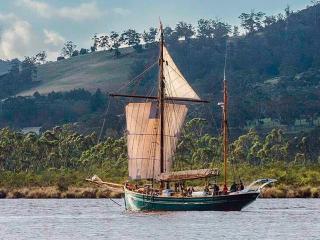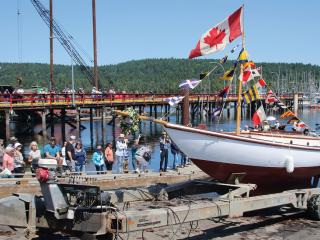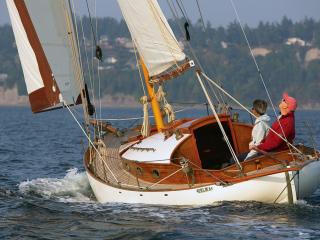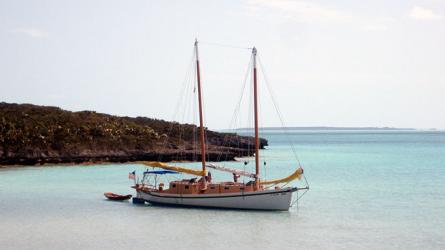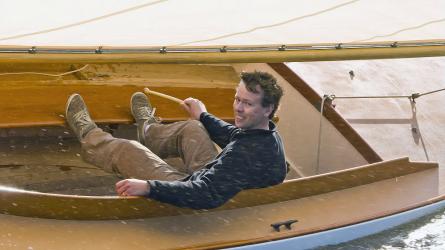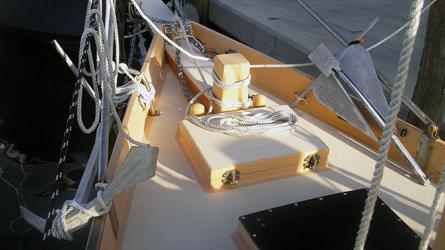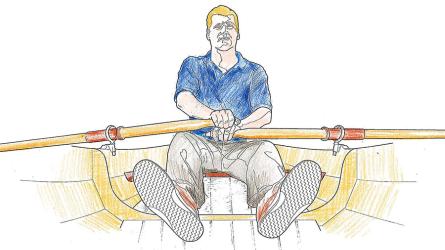January / February 2024
The Plywood Gislinge Boat
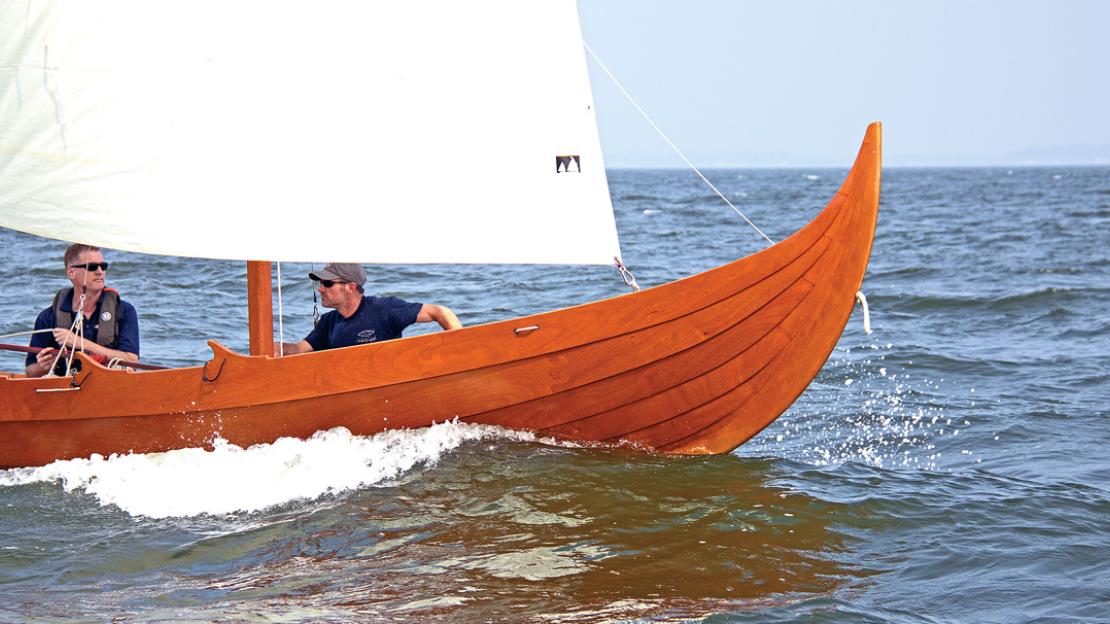
BLAINE SKILLING/CHESAPEAKE LIGHT CRAFT
John Harris of Chesapeake Light Craft (CLC) has developed a staggering variety of epoxy-plywood boats. There’s nothing he likes more than a challenge, and adapting a 900-year-old Norse design came as a particularly thorny one.
Every four or five years, I like to zig when the business plan suggests zag. I’ll build interesting things such as proas—the Esperanto of the sailing world—canoe yawls, raid boats, or solar-electric launches. Various business writers on deadline have acclaimed these high-visibility projects as marketing genius on my part. In fact, of the last five oddballs the only one that earned back its investment was a teardrop camper, not a boat.
Some of my design adventures have a practical purpose, such as to serve as the centerpiece of the stitch-and-glue boatbuilding class I teach every summer at WoodenBoat School in Brooklin, Maine. An unusual new design challenges the class, and I get a Tom Sawyerish boost on the prototype in the form of a dozen hardworking students to build it.
Some years ago, I watched a traditional Norwegian faering take shape in an adjacent classroom. Driven half-mad by the beauty of those singular lines, I thought, “Aha! Next year’s stitch-and-glue class!”
Twelfth-century Nordic clinker boatbuilding and 21st-century stitch-and-glue boatbuilding are broadly similar. In simple terms, the project begins in both cases with flat planks cut to precise shapes and joined along their edges. In the same way that reassembling the flattened petals of a banana peel will yield the 3D shape of a banana, the desired hull shape springs to life as planks are fastened one to the next. Only then are stiffening frames and interior structures added to this monocoque hull, in contrast to boatbuilding methods in which the frames or station molds dictate the final shape of the hull skin.
Using Chesapeake Light Craft’s (CLC) trademarked plank-lap system, I’d had some successes with large and intricate shapes. A number of 32' Cornish-style rowing gigs have been built stitch-and-glue style in lapstrake plywood to a CLC design, and I’d even figured out how to replicate the look and feel of a good Maine peapod that way (see WB 277). Why, then, could we not run out a set of plywood strakes that would stitch up into a Viking craft?
To read the rest of this article:
Click the button below to log into your Digital Issue Access account.
No digital access? Subscribe or upgrade to a WoodenBoat Digital Subscription and finish reading this article as well as every article we have published for the past 50-years.
ACCESS TO EXPERIENCE
2-for-1 Print & Digital Subscription Offer
For this holiday season, WoodenBoat is offering our best buy one, get one deal ever. Subscribe with a print & digital subscription for $42.95, and we’ll give you a FREE GIFT SUBSCRIPTION to share with someone special.
1 YEAR SUBSCRIPTION (6 ISSUES)
PLUS ACCESS TO MORE THAN 300 DIGITAL BACK ISSUES
PRINT+DIGITAL $42.95
Subscribe
To read articles from previous issues, you can purchase the issue at The WoodenBoat Store link below.
 Purchase this issue from
Purchase this issue from

